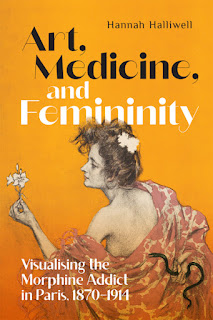Art, Medicine, and Femininity. Visualising the Morphine Addict in Paris, 1870–1914
Hannah Halliwell
McGill-Queens' University Press
Part of the Intoxicating Histories (number 0 in series)
240 Pages, 6 x 9
12 colour plates, 38 bw illustrations
ISBN 9780228019909
January 2024
“Paris is the centre of the cult,” wrote Robert Hichens in Felix, his 1902 novel on the rising number of morphine addictions in Europe. In Paris, artists depicted the morphine addict numerous times, yet they disregarded the reality of France’s addiction problem: male medical professionals made up the highest proportion of people who used morphine habitually. In oil paintings, caricatures, and lithographs, artists such as Pablo Picasso, Eugène Grasset, and Théophile Steinlen almost always depicted the morphine addict as a deviant female figure.
Artists sensationalized addiction to elicit shock and stand out in the crowded Parisian art market. Their artworks show influences from contemporary medical texts on addiction and artistic depictions of sex workers, lesbians, and other women deemed socially deviant. These images proliferated in French society, creating false narratives about who was or could become addicted to drugs and setting a precedent for the visualization of drug addiction. Hannah Halliwell links the feminization of addiction to broader anxieties in late nineteenth-century France - the defeat by Prussia in 1871, concerns about social decadence, a declining population, and a rising feminist movement.
Art, Medicine, and Femininity presents a new understanding of the history of addiction and substance use and its intersection with art and gender.

Aucun commentaire:
Enregistrer un commentaire